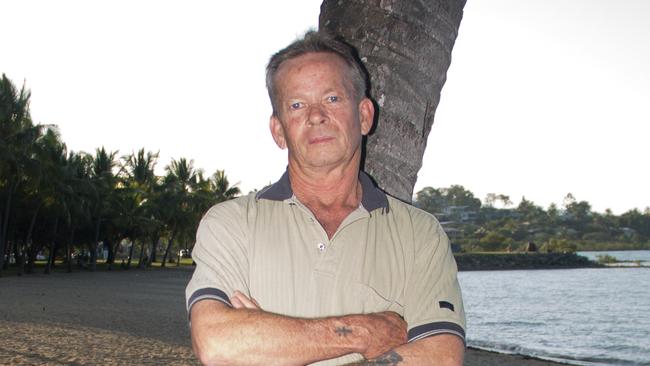First case of black lung disease in above-ground mine worker
A FORMER mine worker is the 16th person to have been diagnosed with black lung disease in Queensland - but there’s something about his case that has sent further shock waves through the industry.

News
Don't miss out on the headlines from News. Followed categories will be added to My News.
THE first case of black lung disease in a worker at an open-cut mine has been confirmed in Queensland.
Paul Head, has been employed at BHP Billiton Mitsubishi Alliance’s Goonyella Riverside mine at Moranbah, west of Mackay, for 31 years but has never worked underground.
The Department of natural Resources and Mines Department and union leaders yesterday confirmed it as the 16th case of Coal Workers’ Pneumoconiosis — or black lung — in the state since the disease re-emerged last year.
Mr Head’s case is the first identified in an open-cut mine worker in Australia.
“It’s a real bloody shock,’’ the 55-year-old said. “It thought I was pretty safe because I’ve never worked underground.’’
Mr Head’s condition was discovered during a routine five-year medical check.
A chest CAT scan was sent to doctors in Brisbane and the Uubnited States, who confirmed black lung last week.
“My head has been in a spin since,’’ the married father-of-two said.
CFMEU mining and energy division Queensland president Stephen Smyth said: “It’s a myth that miners working in open-cut mines are not exposed to high levels of coal dust or at risk.
“So far, industry and governments have been assuming this problem is isolated to underground mines have been assuming this problem is isolated to underground mines — we now know this is a false assumption,’’ Mr Smyth said.
Confirmation of black lung among a surface worker potentially meant many more mining employees were at risk, he said.
A 2012 study in the United States had shown one in 50 workers at surface coal mines had developed black lung and Mr Smyth said a similar rate was possible here.
A department spokesman last night said: “In previous decades, above-ground coal miners operated open-cab coal mining machines which exposed them to respirable coal dust.
“Advancements in technology and new equipment design means air-conditioned and dust-controlled environments are now available to coal mine workers, reducing their exposure to dust.”
Incurable and fatal, black lung was thought to have been eradicated in Australia for three decades.
A Queensland Parliamentary select committee was last month announced to investigate the issue further — focused on prevention, early detection and support for workers with the disease.
The union is demanding the legal coal dust level of 3mg per cubic metre in Queensland be reduced to the NSW limit of 2.5mg
Mr Smyth said: “The current legal dust exposure limits in Queensland are insufficient and are also not being appropriately monitored to prevent excess dust exposure.’’
But a study by Monash University experts last month said it was not known what a safe level of exposure was — or if there was one.
The union is also lobbying for the introduction of a 10c per tonne levy on coal production to fund an industry compensation scheme for black lung victims.
And it wants spot-checks by inspectors and public reporting of dust levels recorded as well as random sampling or workers with 15-plus years’ service to try to identify at-risk employees.
The department spokesman said: “Safe Work Australia is currently reviewing national occupational exposure standards for airborne contaminants. The review includes respirable coal dust, and the Minister has committed to adopting any recommended changes.”
All Queensland coal mine workers were required to have a health assessment before they commenced work on a mine site and then at least once every five years or whenever recommended by their nominated medical adviser.
“Queensland Mines Inspectors routinely monitor industry compliance by reviewing dust monitoring data and conducting on-site inspections at coal mines to ensure effective dust management.”
Anyone diagnosed with the disease could claim under the state workers’ compensation scheme or their employer’s insurance, or sue for damages, the spokesman said.
A company spokesman said: “BMA can confirm that we have received advice from the Government confirming the diagnosis of a BMA open cut employee with CWP and other dust related conditions.
“BMA will continue to work closely with our employees and the nominated medical adviser on the actions we need to take in response.
“ We’ve been working closely with our workforce since the issue came to light in 2015 to keep them informed of developments and the support we make available.”


